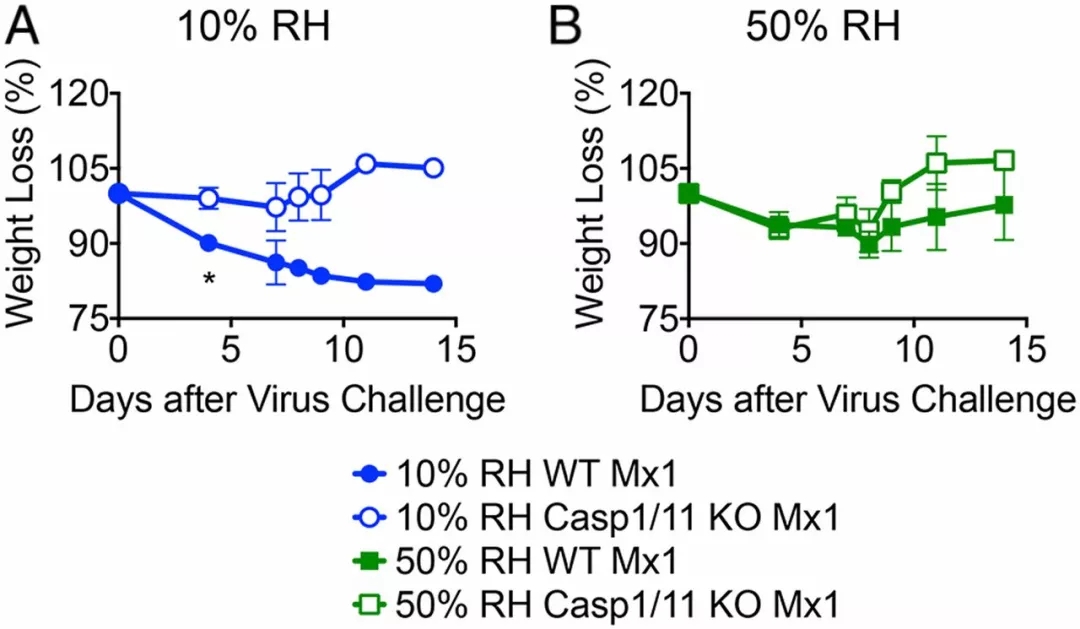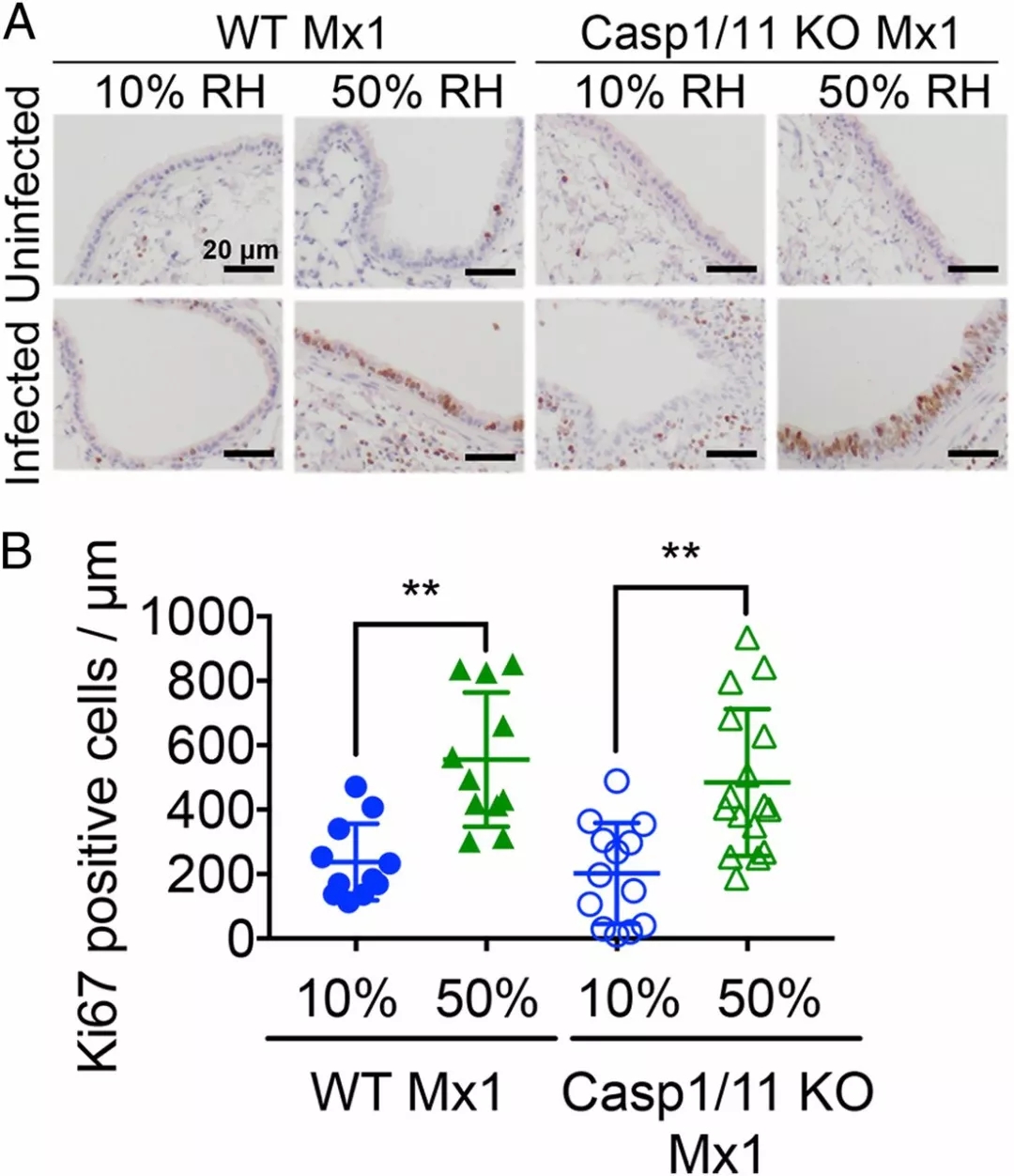揭示流感病毒在低湿度下更易传播的相关机制
秋冬季节多发流感感染。美国耶鲁大学一项最新研究发现,流感病毒之所以在秋冬季节更易传播,一个关键因素是湿度低。
研究团队介绍,此前医学专家已知温度低和湿度低会助推流感病毒传播,但对低湿度具体如何影响人体免疫系统对流感病毒的抵御知之甚少。此次,他们在新一期美国《国家科学院学报》上发表论文题为“ Low ambient humidity impairs barrier function and innate resistance against influenza infection”的论文,提示湿度低易使流感病毒“长驱直入”主要是从3方面阻碍了免疫系统发挥其应有作用。
他们在实验中利用转基因方法改造实验鼠,使其能像人体那样通过免疫系统抵抗病毒感染。然后将实验鼠关在温度一样的小隔间里,但湿度分为正常湿度和低湿度两种。

低湿度通过caspase-1/11激活增强流感疾病症状

低湿度气道上皮细胞的组织修复
当这些实验鼠被暴露在甲型流感病毒下时,研究人员发现,低湿度组实验鼠的免疫响应会从3个方面受到牵制。首先,低湿度会使呼吸道细胞纤毛抵抗流感病毒的效力减弱。其次,病毒会引发肺部损伤,在低湿度条件下,呼吸道细胞修复这种损伤的能力会下降。再次,流感病毒入侵后,被感染的细胞会释放干扰素向周边细胞预警,但在低湿度下,这种预警机制会失效。
研究人员说,这一研究结果很好地解释了为何空气干燥的秋冬季节,流感病毒更易流行。因此在流感季,防控工作应将湿度这一重要因素考虑在内,比如在居家、学校、工作地点甚至医院等场所利用加湿设备增加空气湿度,或许可以帮助人们减轻流感症状、加快感染后的恢复过程。不过,他们也强调,湿度并非流感暴发的唯一影响因素。
Abstract
In the temperate regions, seasonal influenza virus outbreaks correlate closely with decreases in humidity. While low ambient humidity is known to enhance viral transmission, its impact on host response to influenza virus infection and disease outcome remains unclear. Here, we showed that housing Mx1 congenic mice in low relative humidity makes mice more susceptible to severe disease following respiratory challenge with influenza A virus. We find that inhalation of dry air impairs mucociliary clearance, innate antiviral defense, and tissue repair. Moreover, disease exacerbated by low relative humidity was ameliorated in caspase-1/11–deficient Mx1 mice, independent of viral burden. Single-cell RNA sequencing revealed that induction of IFN-stimulated genes in response to viral infection was diminished in multiple cell types in the lung of mice housed in low humidity condition. These results indicate that exposure to dry air impairs host defense against influenza infection, reduces tissue repair, and inflicts caspase-dependent disease pathology.
原文链接:https://doi.org/10.1073/pnas.1902840116
本文参考:科学网
内容来源:病毒学界,版权归原作者所有,
如有侵权,请联系删除
卓诚惠生——追求品质卓越,致力健康事业
了解更多资讯,请识别下方二维码,关注卓诚惠生~